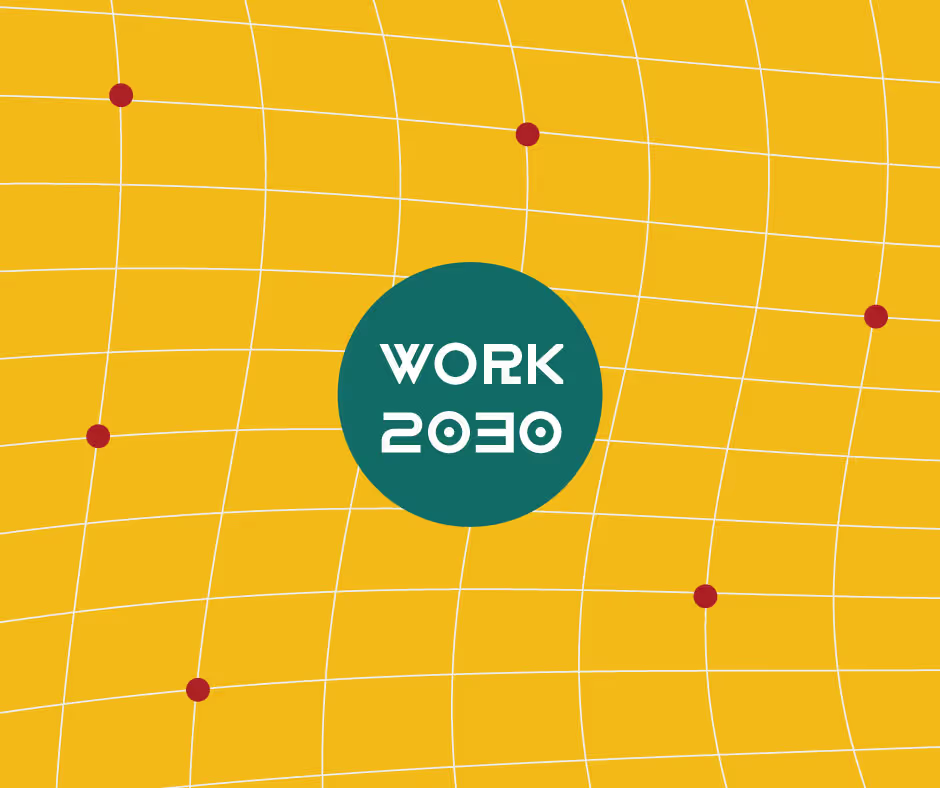The Workplace is transforming in front of our eyes. Over the last few decades, there were multiple factors that accreted this transformation, like demographic shifts, multi-generational teams, globalization, automation, and now, a global pandemic. The future of work, workplaces, and the technology surrounding work is coming sooner than we might think. So, what can we expect?
Lessons from History
One of the biggest changes in recent history regarding work and the workplace dynamics was the shift to multi-generational teams. To adapt to the change, the businesses of the world had to adapt the corporate culture, and managers, their management style.
This was a big shift in workplace dynamics, but a necessary one to stimulate organizational productivity and creativity while creating harmony and room for collaboration between the co-workers.
Managers might remember this is one of the biggest challenges in the workplace of the past few decades, but a more recent situation trumps even this problem - the global 2020 pandemic that literally changed work overnight. Everyone that could take their work home and managers had to adapt the work immediately to the new work-from-home culture.
The so-called "new normal" appeared to end over the summer but now might return as the second wave of the pandemic is beginning to take place. And while most employees are used to the temporary changes, it's likely that the pandemic will have a lasting effect on the way we work and the workplaces as well.
The future of work
Every organization is made by the people. Thus, they are the biggest catalyst for changes in the workplace. Generation Z is just starting to enter the workforce, and they have different needs and behave differently than the previous generations.
They are not comfortable with rigid corporate structure, love rapid progress, ask for constant feedback, are hungry for constant learning, and are very ambitious and flexible. Both Gen Z and the Millennials cultivate many talents, interests, and knowledge: technology skills, analytics and data, business management skills, design, and creative skills.
Surprisingly, surveys show that although Gen Z-s are digital natives, they still prefer face-to-face human interaction at work and in-person communication over texting or videoconferencing. This finding is a surprising contradiction and it questions the theory that full-time remote work and digital workplaces are the future of work.
Thus, offices are becoming more important as places that catalyze human skills instead of places where highly technical things are done - which is a lot more pleasant experience than putting people in cubicles (think of Google's Offices).
Companies worldwide closed their offices and started working remotely because of the COVID pandemic and social distancing. It inevitably changed the way we work and accelerated digital transformation that was happening for the past decade and will continue in this decade.
What will workplaces look like in 2030?
In 2019 there was an explosive growth of a new type of real estate technology known as PropTech. PropTech is covering advancements ranging from physical operations, maintenance to administrative software, that might offer innovative solutions for protecting people's health and safety at work.
Antony Slumbers, a PropTech expert, claims that there is a "really interesting paradox about this highly technologically evolved world: it's actually making people much more importantand it's making offices more important too."
PropTech focuses on workplace needs in the modern world and includes things like: access control (Nedap or Lenel), social distancing aids, automated contactless elevators, and other touch-free experiences.
Mihir Shah, the Co- CEO at JLL Technologies (one of the companies that are responsible for the PropTech boom) says that "while the pandemic has affected startups in different ways, it brought into focus opportunities for real estate technology that stretch beyond the four walls of a building.
He highlights that the physical building isn't always the defining factor of the workplace dynamics. It's about the experience companies provide for their workforce, wherever they are.
The center of the future workplace is the employee experience, which is inherently connected with PropTech. PropTech is simply a way to boost workspace automation, increasing productivity, saving time, and differentiates your business in the way it supports the workers.
Coworking spaces in the future of work
Workforce trends suggest that organizations are increasingly relying on staff on demand, oftentimes referred to as the distributed workforce (for example, Uber drivers). According to some projections, by 2025 540 million workers will be using Upwork, Freelancer, Fiverr, or similar websites to find jobs. And Research also shows that 21,000 people used co-working spaces in 2010, 2.17 million in 2019 and it was predicted that the number will grow up to 2.26 million in 2020.
Co-working spaces were designed in order to provide working space for individuals and teams that work remotely. The key thing the offer that the home does not is socialization, which proves to be a very important factor, especially for younger employees. At the same time, many organizations choose co-working spaces in order to de-densify their offices.
It's definitely cheaper and a lot more flexible than renting long-term offices. During the COVID- 19 pandemic, co-working operators had to implement heightened safety protocols (distanced workstations, sanitation practices) because they have an imperative role to play in the situation when start-ups and other companies are trying to restart their operations. In the future, we are most likely to see that PropTech becomes the key to maintaining co-working spaces.
Remote work and collaboration
Remote work and remote collaboration should be the new norm. Instead, it's a challenge for most of the companies since its impact on productivity and corporate culture is, for the most part, negative. It has its own pros, but after a longer period of time, the cons tend to take over and take a toll on productivity and mental health.
There were several experiments that show that a large percentage of people show increased productivity while working from home at least one day per week, while for many others working remotely (in the current situation- working from home) is distractive and draining. Here are some tips on how to overcome these issues.
Regardless of the drawbacks, more than 50% of adults want to continue working remotely full time, and many companies announced remote work as a long-term business strategy (Uber, Microsoft, Google, Twitter, and many more). In this 2020 McKinsey& Company's survey of 800 executives around the world, around 20% of the executives said that 1/10 of their employees could work remotely 2 and more days a week going forward.
There are a handful of sectors that could deploy their employees remotely, such as finance, insurance, and IT. Still, around 60% of the workers in the US economy cannot work remotely because their jobs require some physical presence, while that percentage is even higher in less developed countries.
Innovative concepts
The digital workforce in a new concept that refers to digital "workers" - AI, robots, and bots, and aims to help humans in work operations instead of making them redundant. It consists of five key components: staff on demand, maintained and leveraged communities, algorithms that enable efficient workforce operations, fully automated work, and engagement of the remaining workforce.
Innovators, on the other hand, are raving about virtual reality offices, they think of app-controlled meeting rooms, AR, and holographic experiences. Facebook sees VR as the future of office work and tries to create a virtual reality office environment where workers would interact as avatars using VR headsets.
Can you imagine meeting up with holographic versions of distant colleagues? Let's wait and see the exciting innovations that could be soon revealed.
Technology is revolutionizing the way people work and the workplace itself, and this will escalate further in the future. Blockchain, artificial intelligence, big data, machine learning are already in place today and more than 80% of business leaders plan to use emerging technologies for workforce productivity.
Around 70% of business leaders plan to implement machines- robots to surpass human limitations and enhance the individual capabilities of humans so they can focus more on higher-value tasks. There will be challenges in that collaboration, but if "humans lead with caution, the human-machine partnerships will power the future of work".
Conclusion - The future of work and workplaces
Technology is revolutionizing the way people work and the workplace itself, and this will escalate further in the future. More than 80% of business leaders plan to use emerging technologies for workforce productivity. Whether that will first be PropTech, AI, or new and innovative management approaches to workplace collaboration, there will be big challenges in the workplace coming in the very near future. The pandemic has not inspired so much as moved things along at a much faster rate and the companies that accept the changes on the horizon faster, will soon become the pioneers of the future economy.







.svg)